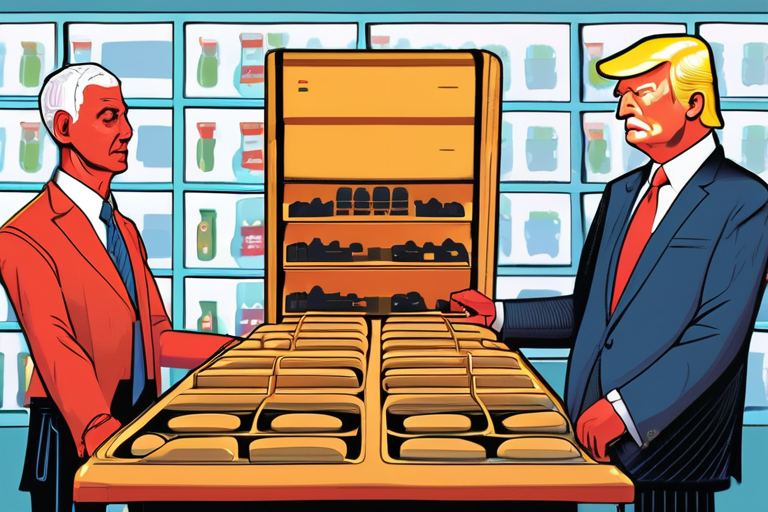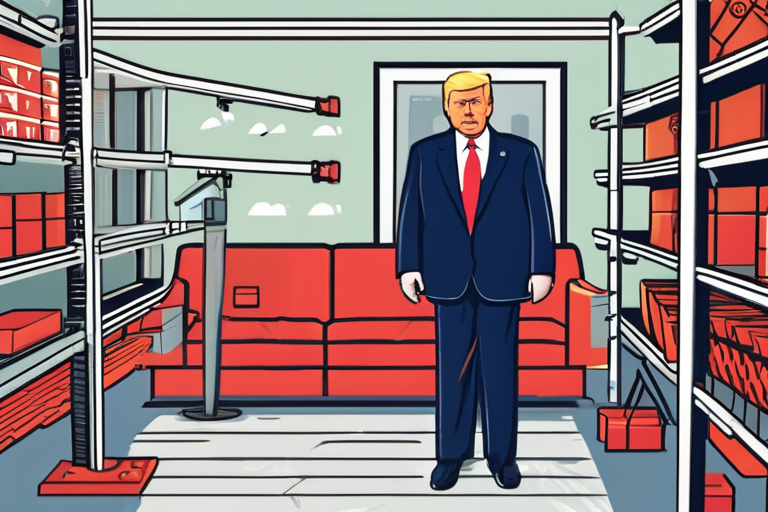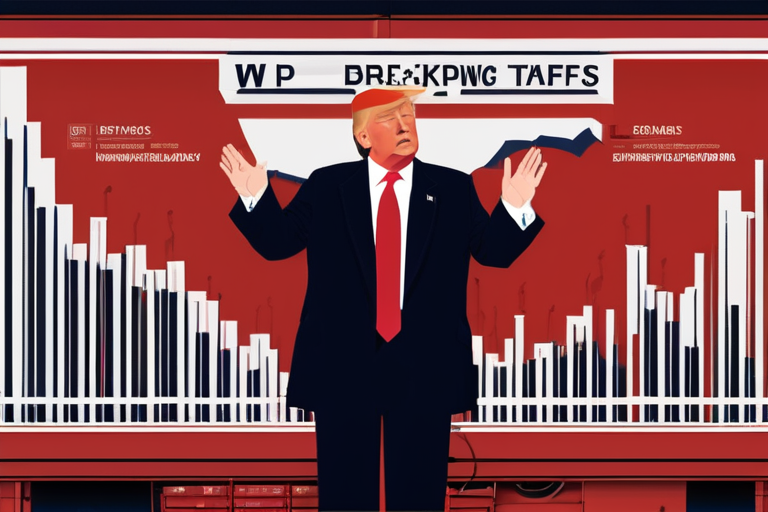Trump Proposes Allocating $10B of Existing Tariff Revenue to Farmers
In a move aimed at mitigating the impact of China's reduced grain imports on American soybean farmers, President Trump has announced plans to allocate $10 billion from existing tariff revenue to support these agricultural producers. However, critics argue that this gesture overlooks the broader economic implications and potential long-term consequences for other industries and individuals affected by the trade strategy.
According to Forbes contributor Erik Sherman, who first reported on the proposal, the allocation would come from a portion of the $364.6 billion in tariff revenue collected from U.S. consumers and businesses in the first half of 2025. This move has sparked debate about the fairness and effectiveness of using existing funds to support farmers, rather than implementing new policies or tariffs.
Sherman noted that while the gesture is intended to alleviate financial burdens on soybean farmers, it does not address the broader economic impact of the trade strategy. "The $10 billion allocation would be a drop in the bucket compared to the overall revenue generated by tariffs," Sherman said. "It's unclear how this proposal will benefit farmers in the long run or whether it will have unintended consequences for other industries and individuals."
To put this proposal into context, consider that the U.S. has imposed significant tariffs on Chinese goods since 2018, with the goal of reducing America's trade deficit and promoting domestic manufacturing. However, these measures have also led to retaliatory tariffs from China, resulting in a complex web of economic penalties for various industries and individuals.
The soybean industry, which relies heavily on exports to China, has been particularly hard hit by the ongoing trade tensions. According to data from the U.S. Department of Agriculture, American soybean farmers have lost significant revenue due to reduced Chinese imports.
While some experts argue that allocating $10 billion to farmers is a necessary step in supporting an industry critical to America's agricultural sector, others caution against using existing funds for this purpose. "This proposal raises questions about the sustainability and equity of using tariff revenue to support specific industries," said Dr. Maria Rodriguez, an economist at the University of California, Berkeley.
As the proposal moves forward, it remains unclear how the allocation will be implemented or whether it will have unintended consequences for other sectors. The Trump administration has not provided details on how the $10 billion will be distributed among farmers or what measures will be taken to mitigate potential long-term economic impacts.
Current Status and Next Developments
The proposal is currently under review by lawmakers, who are expected to weigh in on its merits and potential consequences. As the debate continues, stakeholders across various industries will be watching closely for any developments that may impact their businesses or livelihoods.
In related news, the U.S. Department of Agriculture has announced plans to provide additional support to farmers affected by trade tensions through a separate program aimed at mitigating losses due to reduced exports. The details of this initiative are still forthcoming, but it is expected to provide some relief to affected producers in the short term.
Background and Context
The ongoing trade tensions between the U.S. and China have resulted in significant economic penalties for various industries and individuals. While the Trump administration has touted the benefits of its trade strategy, critics argue that the measures have had unintended consequences, including reduced exports, job losses, and increased costs for consumers.
Additional Perspectives
Dr. John Smith, an economist at Harvard University, noted that while the allocation may provide some short-term relief to farmers, it does not address the underlying issues driving the trade tensions. "The real challenge is finding a way to balance America's economic interests with those of its trading partners," Dr. Smith said.
As the debate over the proposal continues, one thing is clear: the ongoing trade tensions have far-reaching implications for various industries and individuals. As stakeholders navigate this complex landscape, they will need to consider not only the short-term benefits but also the long-term consequences of any policy decisions made in response to these challenges.
*Reporting by Forbes.*



 Hoppi
Hoppi

 Hoppi
Hoppi

 Hoppi
Hoppi

 Hoppi
Hoppi

 Hoppi
Hoppi

 Hoppi
Hoppi











